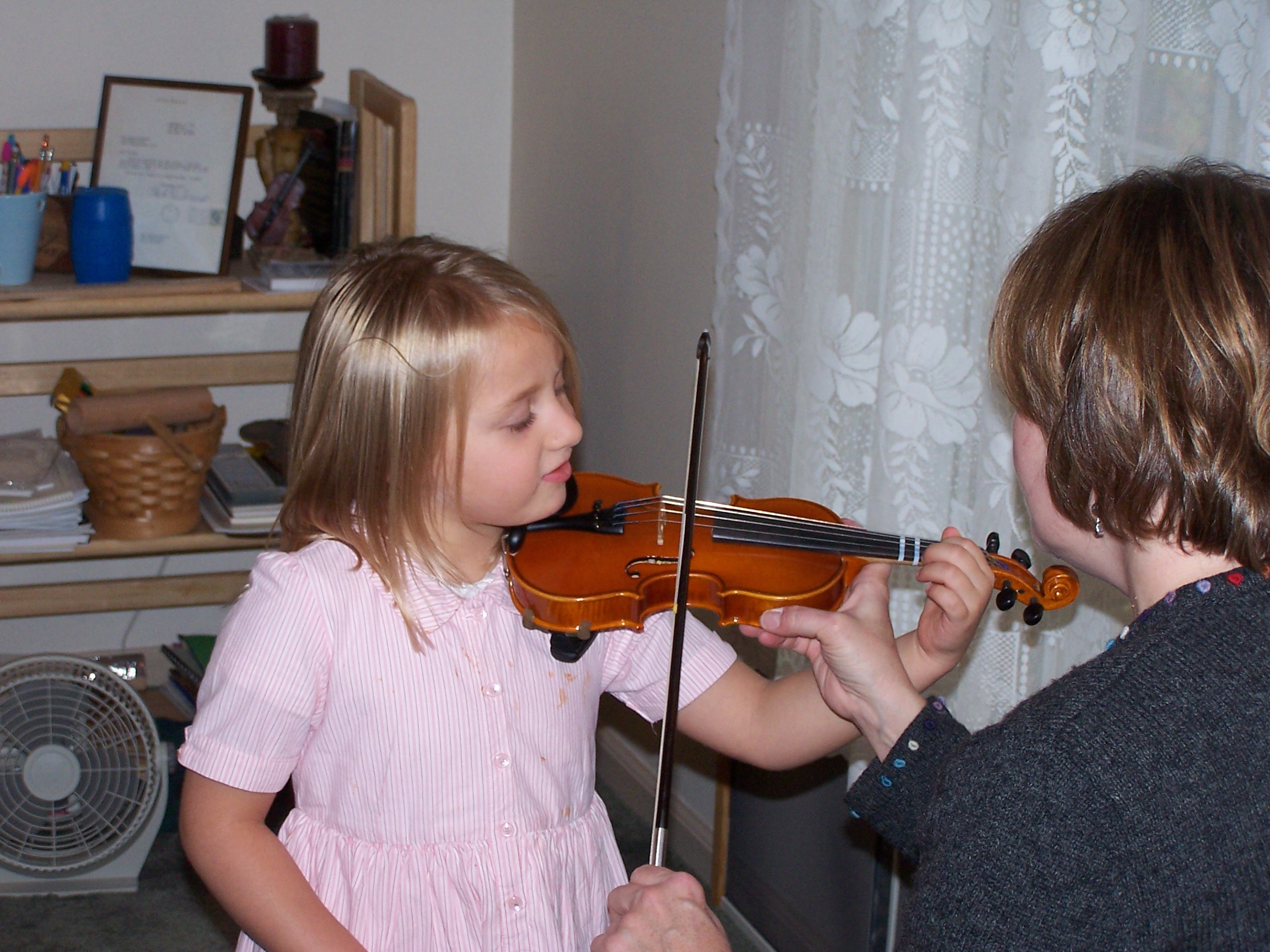The Suzuki Triangle is an aspect unique to the Suzuki philosophy of teaching. The parent, teacher, and child (Three sides of the triangle) all work together as a team to achieve learning both in lessons, and in daily practice at home. This is quite different from other private lessons taught by a non-suzuki-trained teacher.
Q: Who is Shinichi Suzuki? A: The man who came up with this philosophy of teaching that has made a huge impact on generations of families. Read more here.
Expectations for the Teacher
- Provide a creative teaching environment that motivates both the student and parent to do their best.
- Approach lessons with a positive encouraging attitude.
- Provide clear instructions and assignments in a format that will promote successful completion at home.
- Teach student and parent how to produce a strong beautiful tone while maintaining good posture.
- Incorporate both a long term goal for the child, as well as be aware of what the child and parent can do now to support that future.
- Assist in communication between the parent and student.
- Provide support, assistance, and information in many formats.
- Use repertoire that the student and parent already know well to introduce new skills and techniques.
- Provide many examples of creative ways for the parent and child to practice.
- Inspire a love of learning and a love of making music.
Expectations for the Student
- Attend lessons with a positive attitude and a desire to participate.
- Practice the material assigned.
- Ask questions to clarify anything that is unclear
- Practice daily and work respectfully with the parent like you would your own teacher.
- Listen to the recordings daily, even if there is no time to practice.
Expectations for the Parent
- Attend lessons, take detailed notes, and make sure students listen to their recordings daily.
- Assist in daily practice, following trough on what the teacher has assigned in private and group lessons
- Feel free to ask questions for clarification.
- Encourage and support your child's efforts in a positive atmosphere. This includes trying to keep distractions to a minimum during practice, and celebrating the progress being made.
- Creativity in how to spark the child's imagination for repetitions.
- Review the familiar repertoire in every practice session so that it becomes easy and musical and provides the foundation for skills building off of the review piece techniques.



